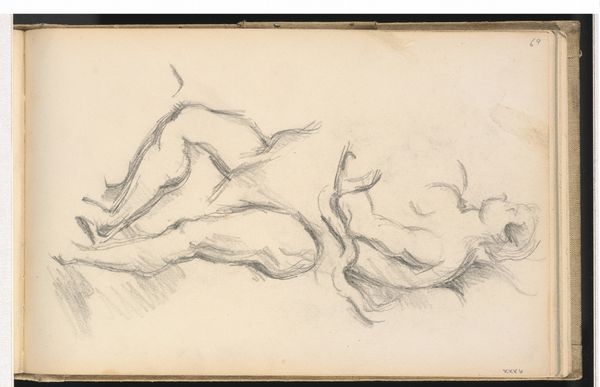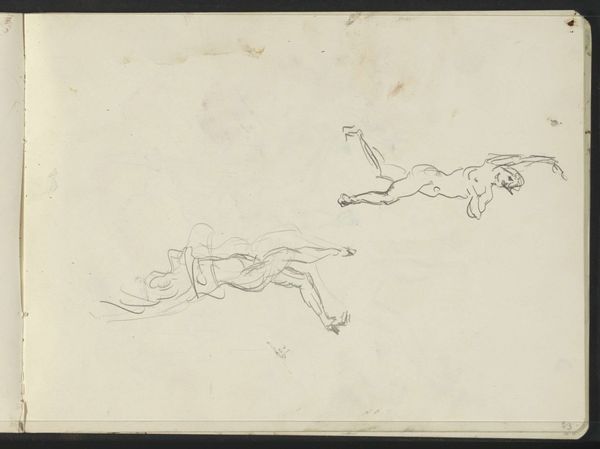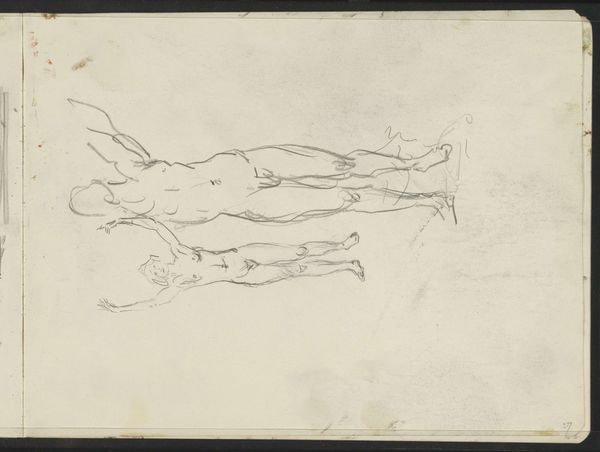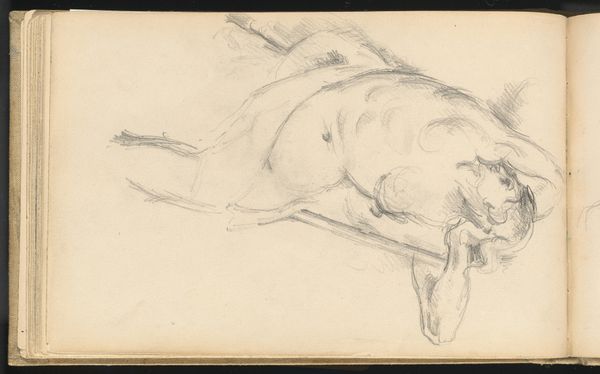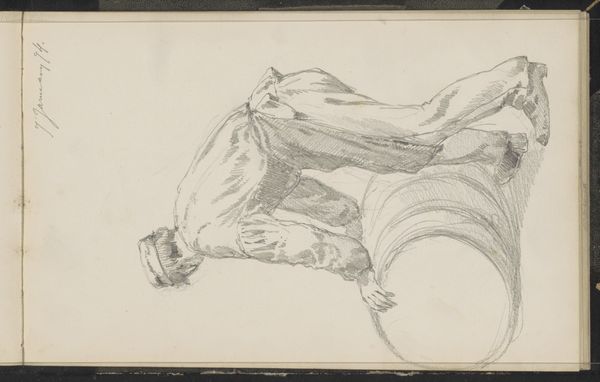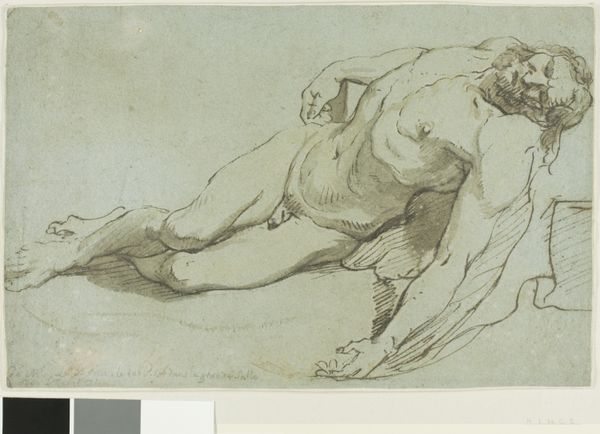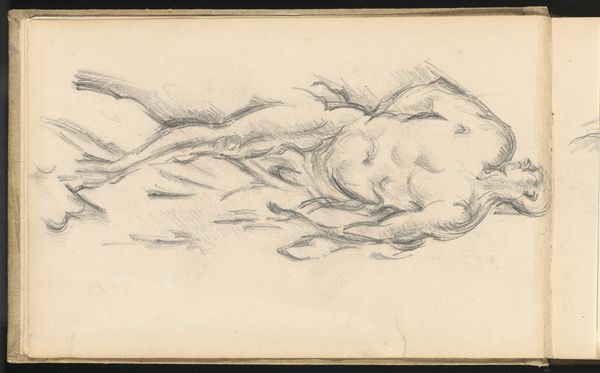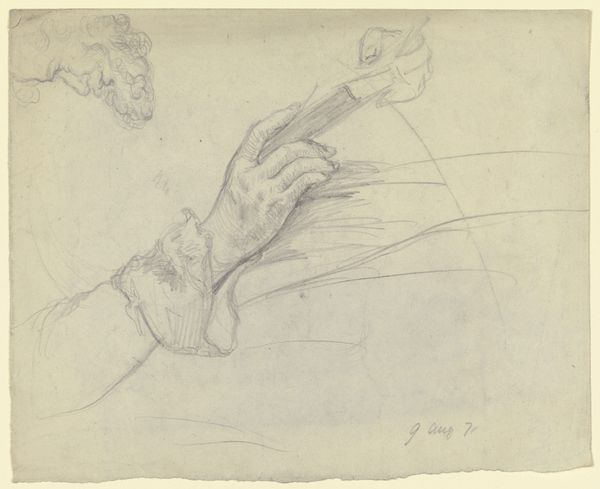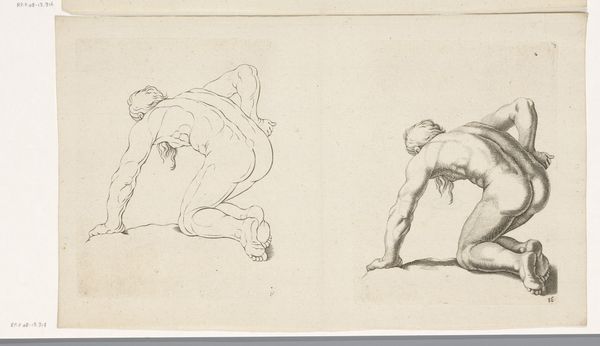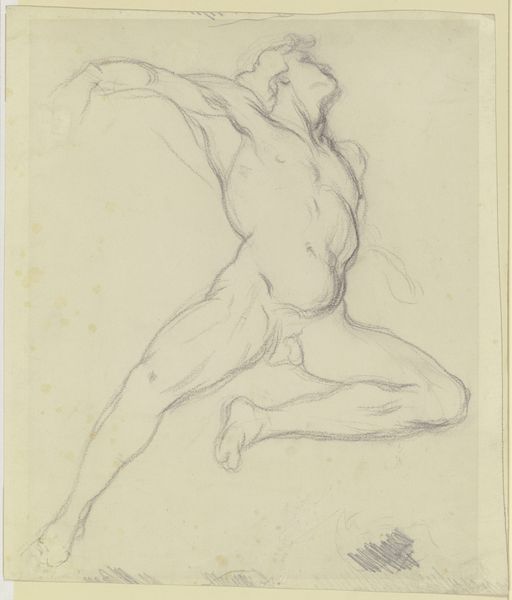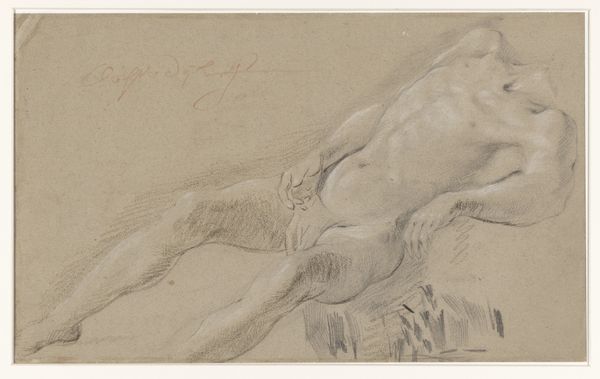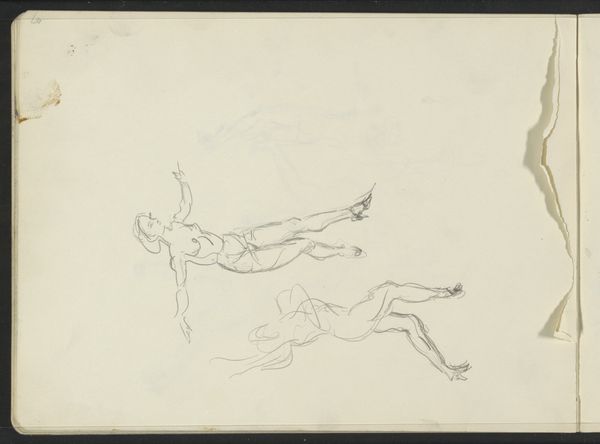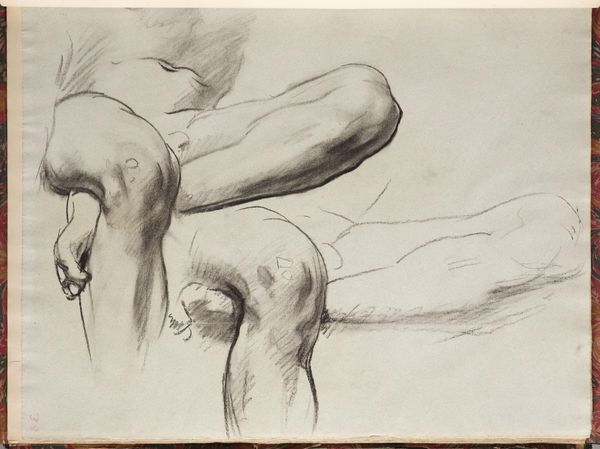
drawing, pencil
#
drawing
#
classical-realism
#
figuration
#
pencil
#
history-painting
#
academic-art
Dimensions: overall: 23.7 x 15.2 cm (9 5/16 x 6 in.)
Copyright: National Gallery of Art: CC0 1.0
Editor: This pencil drawing, "Study of Puget's 'Milo of Crotona'" by Paul Cézanne, created between 1880 and 1883, depicts a classical figure in extreme distress. I find the sketch raw, almost violent, in its depiction of vulnerability. What stands out to you about this study? Curator: The rawness you perceive is critical. Consider what Cézanne, as a late 19th-century artist, might be grappling with by revisiting a Baroque sculpture depicting a figure from antiquity. Puget's Milo is, ostensibly, about physical pain, but it is also a powerful allegory of decline and the abuse of power. How does Cézanne, through his particular aesthetic choices, engage with themes of masculine identity and power structures embedded in the original sculpture? Editor: I hadn’t thought about that, actually. It's interesting how he uses a very academic style, focusing on musculature, yet the sketchiness seems to undermine any sense of heroic triumph. It's a study in failure, perhaps? Curator: Precisely. We need to also recognize how depicting the male nude has historically served to reinforce ideals linked to domination and control. This history makes Cézanne's work all the more fascinating. Is he deconstructing those very ideals by showing the brutal consequences of such dominance, rendering Milo helpless and exposed? Also, think of the inherent power dynamics between the artist and the model, even in a study like this. Editor: That adds a whole new dimension! So, the "failure" might be Cézanne wrestling with these loaded themes in art history. I didn't realize a quick sketch could contain so much social commentary. Curator: Absolutely. By understanding the historical context and the social politics interwoven within art history, we can begin to deconstruct how images shape our perceptions of the world. What appeared as simply a man suffering now seems so complex! Editor: I agree, I'll never look at academic figure studies the same way again.
Comments
No comments
Be the first to comment and join the conversation on the ultimate creative platform.
